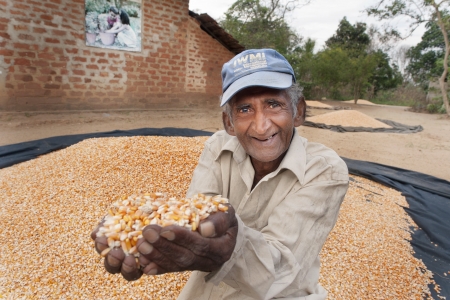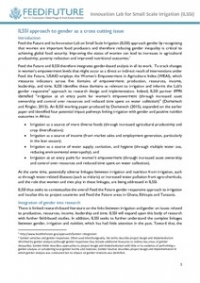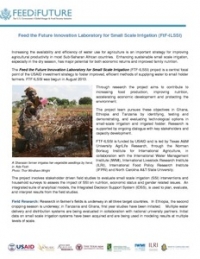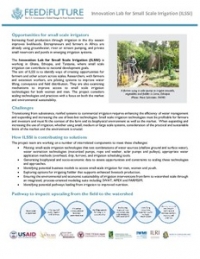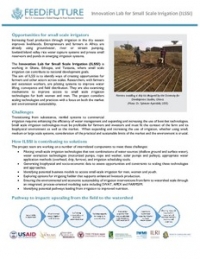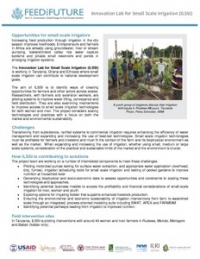Donors and governments rely on quotas as a primary indicator in many projects and programs to try to increase women’s participation and empowerment in water governance. Quotas are now often mandated by many public and donor-funded projects to ensure women’s participation in decentralized water decision-making institutions such as committees, water user associations, and boards.
However, as others have pointed out, quotas alone do not guarantee effective representation and equality for women. Women may, and often do, sit on such bodies without a real voice.
Why quotas won’t work for small-scale irrigation
The problems of inequality and marginalization can be even stickier in cases where no such decision-making organizations exist. This is particularly true for the hundreds of thousands of farmers who adopt small scale irrigation technologies and practices at household level.
Such small scale irrigation is growing rapidly in Africa and Asia, and likely has greater potential than large scale irrigation in Sub-Saharan Africa. While small scale irrigation can increase incomes, improve livelihoods and strengthen resilience, these ‘emerging systems’ fall outside any governance or management institutions. The irrigation technologies – like small pumps – that individual households use do not fall under public schemes or irrigation projects, but rather are dispersed across the landscape and there are usually no water user groups or functioning watershed- or catchment-agencies monitoring the water resources. As such, it is up to the household to adopt and manage these irrigation technologies in a sustainable way.
So how can we increase women’s participation and empowerment in small scale irrigation where there are no common water governance bodies, and no place for quotas?
First step toward alternatives: Understanding household dynamics
Because small scale irrigation largely falls outside of state and community control, women’s participation in management is decided within the household. Recognizing this, IWMI and IFPRI have studied the dynamics within the household after irrigation technologies have been adopted. The work sought to understand the rights of women to use these technologies within the household - a level at which quotas and mandates cannot be enforced. Researchers developed and tested a framework to show how adoption of irrigation technology can have different costs and benefits for household members. The study looked at the particular use, management, fructus (benefit), and alienation rights that are claimed and operationalized by men and women.
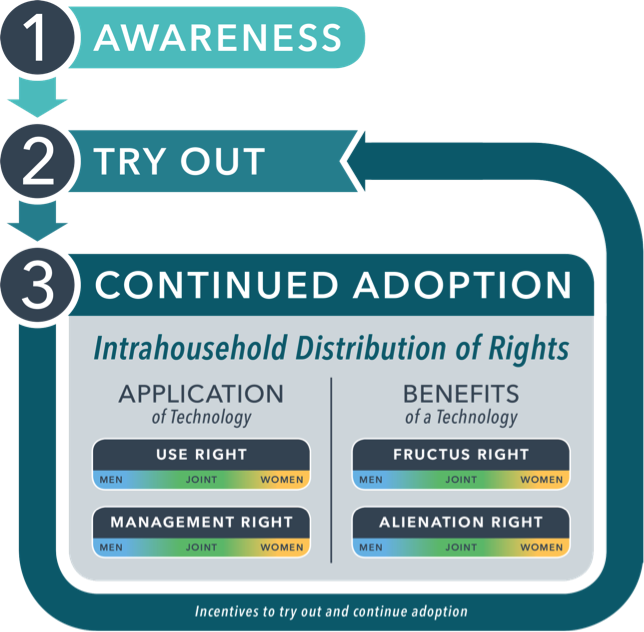
It turns out that even projects that seek to improve the assets of women by requiring women’s participation and giving them technologies may not be benefiting women as expected. Projects that target women to close the gender gap in technology and assets may help women become aware of and “try out” new technology but they overlook the household dynamics that ultimately influence whether a technology continues to be used or is abandoned.
After a technology gets to a household, men often become the de facto ‘owners.’ The authors of the study observed that this happened even when motor pumps were distributed to women. Depending on the context, women may have rights to use and manage an irrigation technology, but they also may carry many of the labour costs. Moreover, women often miss out on the benefits, as they are generally unable to control produce sales and the use of that income, except under limited conditions.
Projects that promote irrigation for women should be aware that targeting women with irrigation technology alone is unlikely to give them full rights over the technology, since the rules of the household often override any project-level rules and expectations. Generally, implementers should not assume that use and benefits are the same. Likewise, projects should be aware that attempts to empower women may fail if they do not also secure support from the men within households. Men can block women’s participation or choose to withhold information to limit decision-making power, such as not informing them of meetings.
Four ways to meet women’s demand for irrigation and benefits
Despite these challenges, women do express demand for mechanized irrigation technologies for greater financial independence and household food security.
Our research results suggest that women prefer irrigation technologies that require less time than current practices and that allow them increased control over resulting income. In Ethiopia, for example, we found that women did not want motor pumps because they added to their time burden, and instead preferred solar pumps, which can reduce both domestic and field labour requirements when located near the household. Importantly, solar pumps can be suitable for crops produced continuously near the household – like carrots, cabbage and amaranthus. Women often have greater control over income earned in smaller amounts over time.
We’ve found four promising approaches that, unlike quotas, can help to increase women’s rights to use and manage irrigation technology and gain from the benefits:
- Targeting and empowering women starts at the household level to manage water resources and related irrigation technologies. Household approaches involving specific trainings and facilitation are commonly used to raise consciousness around division of labour and household decision making. This methodology could be applied to encourage participatory decision-making, specifically over water management, to empower women to manage and benefit from small scale irrigation technologies.
- Increasing women’s access to market and production information, joint financial services and mobile money services that provide alerts on transactions, or transparent and accessible documentation of sales. Improved balance of information can strengthen women’s claims to income from irrigated produce. Women often need support to obtain and secure the right to use cell phones, radios, and bicycles, all of which enable them to participate more effectively in meetings, extension activities and markets.
- Support women’s existing production preferences, such as crops that generate lower sums of income continually over time rather than “lumpy” (large and infrequent) sales. Projects should be cautious if they attempt to shift women’s production to different crops or rapidly increase revenue, as this may jeopardize women’s rights to income.
- Mobilize groups of women to adopt technology to ensure more accountability for technology management, use, and transparency of benefits. Women state that involvement in groups for irrigation strengthens their access to farming inputs, increases income and improves social status, all perceived benefits of irrigation by women. Demonstrating that women’s participation in farmer groups can benefit the whole family, save money, and potentially free up women’s time for other activities may be a necessary first step to facilitate women’s involvement in these decision making groups. So-called female-friendly technologies should also consider portability and location of installation to ensure women’s rights to use and benefit.
Efforts to strengthen women’s rights to participate in the management of irrigation will require deeper investment in transforming gender relations. Quotas or attempts to “force ownership” of technologies for women certainly won’t work. For women to benefit from the high potential of small scale irrigation, we need to look at the gender relations and dynamics within the household, and show that giving women better access to technologies, decision making and assets benefits everyone.







/index.jpg?itok=EzuBHOXY&c=feafd7f5ab7d60c363652d23929d0aee)







